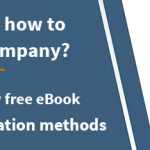In selling a company, the owners gamble the accumulation of all the value created over many years. In this way a huge amount of wealth can either be created or destroyed. For this reason, it is extremely useful to understand the 8 key ways of maximising the selling price of the company.
The first method is to take advantage of the wave. There are periods in history in which the interest rates are low and the stocks are listed in high multiples. They are the moments when people pay the highest prices for whichever company. An intelligent entrepreneur knows how to exploit this window of opportunity. He profits from the ‘wave of high prices’ when the market is hot and sells at the best time.
These days, low interest rates, high stock valuations, as well as an abundance of liquidity in the market are causing many international companies to take up positions in Spain whereby they pay elevated prices.
Don’t get caught up in the paperwork. There are advisors who can create encyclopaedic Sales Books for your convenience, explaining the sector and the history of the company. They are able to spend months preparing documentation for the sale of the company without beginning the search for investors – in many cases because they don’t know how or where to look.
The sales book is important but much more relevant is showing the interested buyer the potential of the company. This does not mean, however, telling them what you have done or earned in the past but rather, showing them the value that the company could create in the future.
Never go out to sell showing a valuation. If you present a valuation to the buyer without having had the opportunity to demonstrate the synergies and all of the added value that they would be receiving with the acquisition of your company, the buyer will be dissuaded before you have been given the chance to start the conversation.
It is much better to present the company and its capabilities; understanding why they want to buy it, calculating synergies, requesting offers, discussing the possibilities by supporting the value that you will bring to them and making them compete with the other offers you have received.
Be pro-active. Many entrepreneurs wait for a buyer to simply surface, without realising that selling the company to the first buyer that appears lacks logic. What is the likelihood that this would be the best buyer or the one who would pay the most?
If you want to sell a company, don’t be passive. The best buyers do not usually spend time actively searching for companies to purchase.
The best buyer is not the one who seems the most obvious or the closest; it could be, for example, a company in a different sector but still related, and located on the other side of the world.
Search for such a buyer, for your company, who has a lot of liquidity and with whom your company brings synergies, irrelevant of where it might be. If this potential buyer perceives true value, he will pay more for the company.
Use experienced advisors. When an interested buyer appears for the company, the entrepreneur in many cases will decide to confront the buyer and his advisors alone, without supporting himself with expert professionals. This translates into prolonged processes, complicated, stalled or collapsed negotiations, unnecessary advances and setbacks, and ultimately wasted time for both parties.
Selling a company is a complicated process which has many obstacles, especially in terms of finance and negotiation. Usually, it is the first time that the entrepreneur has sold a company; he is inexperienced in this area and is risking something very important. Here, experience is without a doubt vital. Just as it would neither be inadvisable to conduct a home inspection without a fiscal advisor, nor build a house without the help of an architect, don´t sell your business without the help of expert advisors.
Show the synergies. When a buyer identifies the true synergies that can be generated together with your company, he is willing to pay more for the business. Synergies become on many occasions the key factor of the economic impact of the transaction.
The more the buyer understands these synergies, the more negotiating leverage you will have. For this reason, it is good to prepare a Synergy Plan focussed on demonstrating to the buyer or investor the value that your company has to offer.
Create competition. If you lack alternatives, you are losing negotiation power and the buyer will take advantage in order to gain constant concessions. Professional negotiators carefully take note of whether or not the seller has other alternatives. We can see it in their gestures, the frequency of their phone calls, the tone they use, and how they react to the demands or requirements in place.
Obtaining more offers helps to maximise the probability of finding the best investor, and thus it gives you most power in the negotiation. By creating this competition you will achieve much higher sale offers. You will receive more motivated potential buyers and thus, on discovering that they have to compete with others, they will raise the price in their offers.
In negotiation, when you are faced with a potential buyer, analyse why it is that they want to buy, what are their restrictions, in what multiples have their other acquisitions been confirmed, what are the possible synergies. It is basic that you must analyse the logic of the opportunity for the buyer during the process and go on to find out: What are their economic motivations? What do they hope to gain from our company? Why do they want it? What do they plan on doing with it?
In summary, finding not just one buyer, but rather the one for whom your company can create the most value; showing your best side, managing communication effectively, framing the negotiation with the most valuable aspects and enjoying alternatives with other possible buyers is imperative so that the operation has the maximum success.
The most important factor to maximise the price of your company lies in being able to interest powerful buyers, with huge amounts of economic resources and with strategic motivation to enter into your company.




